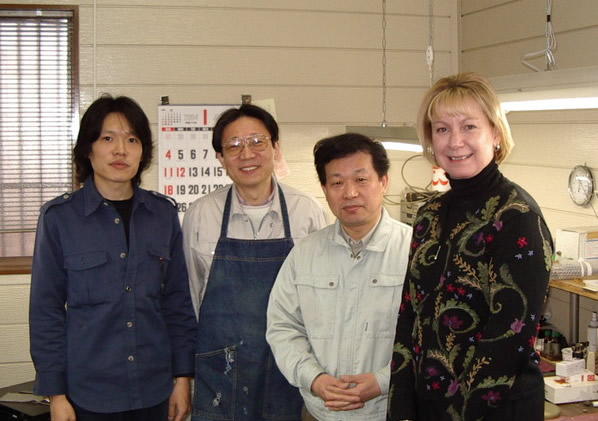The popularity of low flutes is growing world wide. For music specifically composed or arranged for low flutes, please see my "Arrangements" and “Compositions” pages. You will find several pieces of music for low flutes.
The Florida Flute Orchestra and Paige were featured in a Fox 35 Orlando newscast on April 6, 2009. The video features Paige's subcontrabass and double contrabass flutes.
Kotato Contrabass Flute in C
Marsha Wilcox Photography
Slick, my Kotato contrabass flute, was the first Kotato contrabass is this country. Purchased in 1991 at the National Flute Association Convention in Washington, DC, I have had the pleasure of performing with this instrument for over 15 years. During the 1990’s, contrabass flutes were seldom seen or heard in this country. Now, we are seeing quite a few contrabass here, as flute ensembles gain popularity.
With over 9 feet of tubing, the contrabass flute speaks one octave below the bass flute or two octaves below the concert flute. There is a post on the bottom of the footjoint, to be adjusted for a comfortable playing height.
Kingma Sub Contrabass Flute in G
The Kingma Sub Contrabass Flute in G, one of three in the world, speaks ½ octave below the contrabass flute, or two and ½ octaves below the concert flute. Like the contrabass, the footjoint has an adjustable post. This instrument is fabulous in that it not only supports the contrabass flute, it also helps propel my double contrabass flute.
Kotato Double Contrabass Flute in C
The Kotato double contrabass flute, one of four in the world, is made of over 18 feet of tubing and stands over 8 feet tall. With a range one octave below the contrabass flute, two octaves below the bass flute and three octaves below the concert flute, this flute is truly the foundation of the flute family.
The lowest C on this instrument, C1, corresponds to the lowest C on the piano keyboard.
I first learned of this instrument by listening to a recording of Piacere, a Japanese flute ensemble. Mr. Kotato had sent me a CD of Piacere as a gift. At the time, he spoke very little English and I spoke no Japanese. Our common language was music, specifically flute orchestra. When listening to the wonderful CD, I heard bass notes that I could not produce on my contrabass. I looked at the back cover of the CD and noticed the small picture of Piacere. There, I discovered the double contrabass flute.
I contacted Mr. Kotato to find out more information on this new lower flute. He did not have e-mail at the time, so it took quite a long time, working with translators on both sides, to get information about the instrument. I was very interested in purchasing a double contrabass flute, but wasn’t sure if I would have enough air to play it well. One day, in 1997, I was just finishing my final packing for a concert tour to Germany. I was loading my suitcase in my car to go to the airport and the telephone rang. It was a translator for Mr. Kotato. The only way to try playing a double contrabass flute was to come to Tokyo to play his, or to go to Berlin, Germany to play the other double contrabass flute he had recently built for his German representative. You guessed it. My first stop on my German concert tour was Berlin. I scheduled an appointment to try out the instrument and the rest is history.
In January 2004, I had the pleasure of visiting Mr. Kotato in his shop outside of Tokyo.
Unlike the contrabass and sub contrabass, the double contrabass cannot be adjusted for height. I am usually the only person who plays this instrument. I designed a wooden stand, with wheels, enabling me to play the flute at a comfortable height, as well as to easily move the flute. Occasionally, a flutist in one of my ensembles has played the double contra. Since I am tall, my friends have to stand on something to play comfortably. My friend Phyllis Louke, from Oregon, used two thick telephone books. She marked in her music the page number that the phone books needed to be opened to , in order to be at the correct height.
Paige’s “Contra” Specs
| Instrument | Length | Diameter |
|---|---|---|
Contrabass in C |
9.3 feet of tubing |
2.2 inch |
Sub Contrabass in G |
11.2 feet tubing |
2 inch |
Double Contrabass in C |
18.1 feet of tubing |
3.5 inch |
Visit to Kotato
Kotato is a famous contrabass flute maker, located in Japan.



